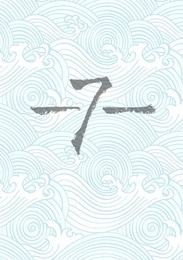You can learn more about the homeopathic process and discover more about your animal, plant or mineral nature here
|
Introduction to Homeopathy for the 21st Century
There have been some significant new developments in homeopathy over the last two decades. Homeopaths started to realise that patients could, if given the space, describe deeper levels of experience than had hitherto been the case. If the space between homeopath and patient is kept open, and the homeopath doesn't jump to conclusions, the patient is often able to lead the practitioner into deeper levels of imagery, experience and sensation. This has opened up domains of experience that weren't normally been described in the classical homeopathic texts. This has led homeopaths to create maps to help the practitioner accompany the client as they enter more fully into the experience and understanding of their own condition. Seven Levels Rajan Sankaran has devised a seven level map which describes seven levels of the journey down into deeper levels of experience. As we describe our symptoms and state of being to another person we pass from more superficial to deeper levels of awareness: ❏ Name Natural Kingdoms
In classical homeopathy each remedy has its own unique symptom picture – the symptoms that the substance can both cause and cure. Remedies can also have particular relationships to each other through similarities or contradictions in their symptom pictures. Thus certain remedies are said to be comlementary to each other, or inimical, or to follow each other well. In recent years however, homeopaths have found that substances can also be related through their natural classification (i.e. through their positioning in a natural classification system such as a plant family). Substances that are related through natural classification are also related in their homeopathic pictures. Many homeopaths of the past investigated these relationships, but with the advent of powerful homeopathic computer programs, it became possible to study those relationships in much greater detail and depth. It became possible, for example, to see the way in which remedies from a particular plant family are not only botanically related, but homeopathically related as well. Thus substances that are grouped together through natural classification can also be grouped together homeopathically. For example remedies made from elements that occupy the same row in the periodic table of the elements can be seen to have themes in common. Remedies made from plants from the same botanical family are also related in their homeopathic pictures. The same is true of remedies prepared from substances coming from a particular animal group. For example all remedies prepared from spider sources have basic themes in common. This has allowed homeopaths to gain a better understanding of the patient's condition and thus more able to see which remedies are really most suited to a person; the ones which are likely to be most effective. When we understand which group of remedies are suitable for a particular person it becomes simpler to find the specific remedy for that person. Do they need a mineral, plant or animal remedy? Which plant family or what type of animal? Which row of the periodic table best matches the issues that the patient presents with. Most (but not all) patients will require a remedy from one of the three major kingdoms – mineral, plant or animal A mineral person has the sensation or experience of completeness or incompleteness (lack) in their internal structure. A plant person experiences a specific sensitivity and reactivity to people and events. An animal person experiences life through the lens of victim or aggressor. Once having established which kingdom a possible remedy belongs to we can then establish which row in the periodic table the patient's issue belongs to (for example an issue of lacking or being complete in my identity would belong to row three), or which plant family the plant sensation belongs to, or what kind of animal is closest to the specific victim/aggressor issue of the patient. Of course we use all the evidence and methodology of classical homeopathy to further help us in this search. The Periodic Table of the Elements Some of the elements of the periodic table, such as Phosphorus and Sulphur, have been well known as homeopathic remedies for a long time. However many other elements were, until recently, unknown as homeopathic remedies. Now, through the work of Jan Scholten, Rajan Sankaran and others, we can see that the periodic table forms a single seven level pattern that pictures the stages of development of individual consciousness, from birth to global consciousness. This understanding is in line with and supports the findings of integral spirituality and psychology theorist, Ken Wilber. He has shown that these patterns of development in consciousness are universal. This understanding is well supported by the conclusions of many individual researchers in the fields of psychology and behaviour. If the links in this developmental chain fail to develop or integrate in a healthy way, ill health and dysfunction can result. The themes of the rows of the periodic table are: |
